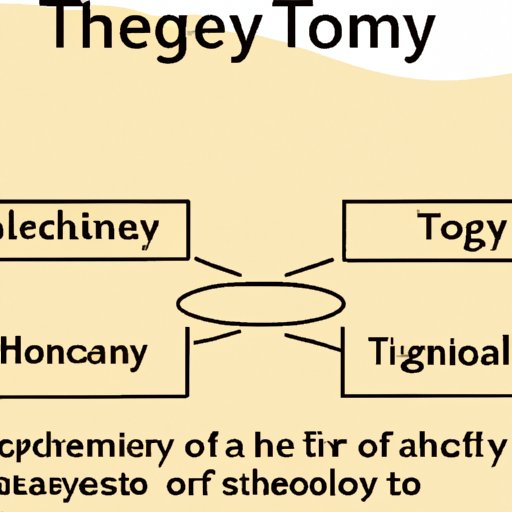Introduction
If you’ve ever taken a science class, then you’re probably familiar with the term “theory”. But what exactly is a theory in science? This article will explore the definition of a theory in science, as well as its basics, types, process and role in scientific research.
Exploring the Basics of What a Theory in Science Is
To understand what a theory in science is, let’s first look at the definition. According to the American Association for the Advancement of Science (AAAS), “a scientific theory is an explanation of an aspect of the natural world that can be repeatedly tested and verified in accordance with scientific method.”
In other words, a theory in science is an explanation based on observation and experimentation that is accepted as true. Theories are not set in stone, however; they can be changed or modified over time as new evidence is discovered.
Examples of theories in science include the Big Bang theory, the theory of evolution, the germ theory of disease, and the atomic theory.

Examining the Different Types of Scientific Theories
In addition to the theory, there are two other types of scientific explanations: the hypothesis and the law.
A hypothesis is an educated guess about how something works. It is based on observations and experiments and can be tested with further observations and experiments. A hypothesis can become a theory if it is proven to be true.
A law is a statement that describes a natural phenomenon. It is typically expressed as an equation and is accepted as true without any further proof. Examples of laws in science include Newton’s Law of Gravity and the Laws of Thermodynamics.
Principles are general statements that describe a particular phenomenon. They are often used to explain the behavior of a system or process. Examples of principles in science include the Principle of Conservation of Energy and the Principle of Natural Selection.
Investigating the Process of Forming a Scientific Theory
The process of forming a scientific theory begins with collecting data. Scientists observe and measure phenomena in the natural world and record their results. They use these results to form hypotheses about how the phenomena work.
From there, scientists interpret the data to draw conclusions. They may also use mathematical models to help them make sense of the data.
Once a hypothesis has been formed, scientists then test it by conducting experiments and collecting more data. If the data supports the hypothesis, then it can become a theory.

Analyzing How Theories in Science are Tested and Proven
Theories in science are tested and proven through replication of results and refutation of results. Replication is the process of repeating an experiment multiple times to ensure that the results are consistent. Refutation is the process of attempting to disprove a theory by finding evidence that contradicts it.
For a theory to be considered valid, it must be able to withstand both replication and refutation. If the results of an experiment cannot be replicated or refuted, then the theory is not considered valid.
Comparing and Contrasting Theories and Laws in Science
The main difference between a theory and a law is that a theory is an explanation of a phenomenon while a law is a description of a phenomenon. A theory explains why something happens, while a law simply states that it happens.
Despite this difference, theories and laws have some similarities. Both are based on observations and experiments, and both are accepted as true without further proof.

Delving into the Role of Theories in Scientific Research
Theories play an important role in scientific research. They provide a framework for understanding nature, developing new technologies, making predictions and furthering scientific knowledge.
For example, the theory of evolution has provided us with insights into the diversity of life on Earth. The germ theory of disease has enabled us to develop better treatments for illnesses. And the atomic theory has allowed us to understand the structure of atoms and how they interact with each other.
Conclusion
This article has explored what is a theory in science, covering topics such as the definition, basics, types, process and role of theories in scientific research. We learned that a theory in science is an explanation based on observation and experimentation that is accepted as true. We also examined the different types of scientific theories, the process of forming a scientific theory and how theories are tested and proven. Finally, we discussed the role of theories in scientific research.
(Note: Is this article not meeting your expectations? Do you have knowledge or insights to share? Unlock new opportunities and expand your reach by joining our authors team. Click Registration to join us and share your expertise with our readers.)
